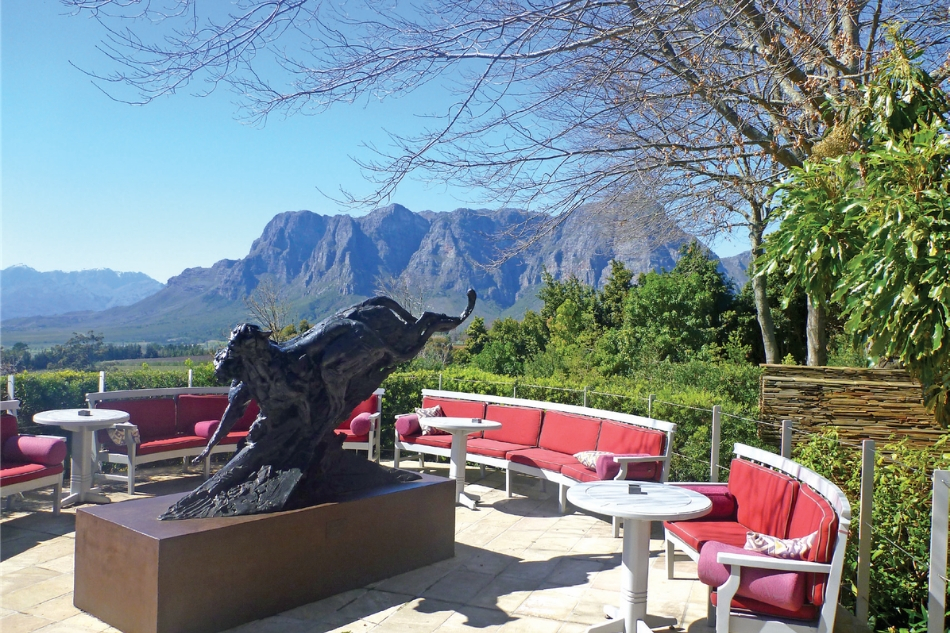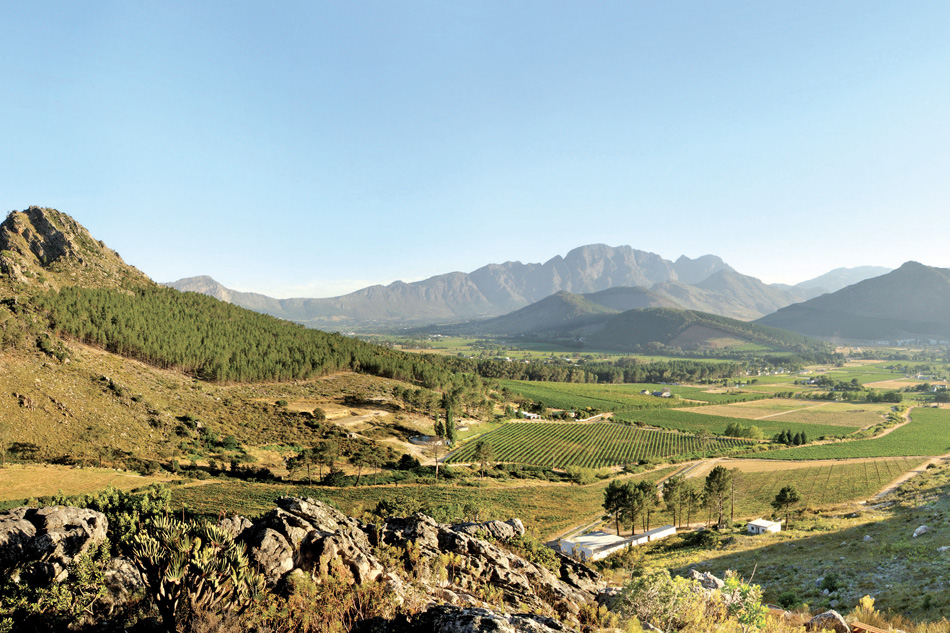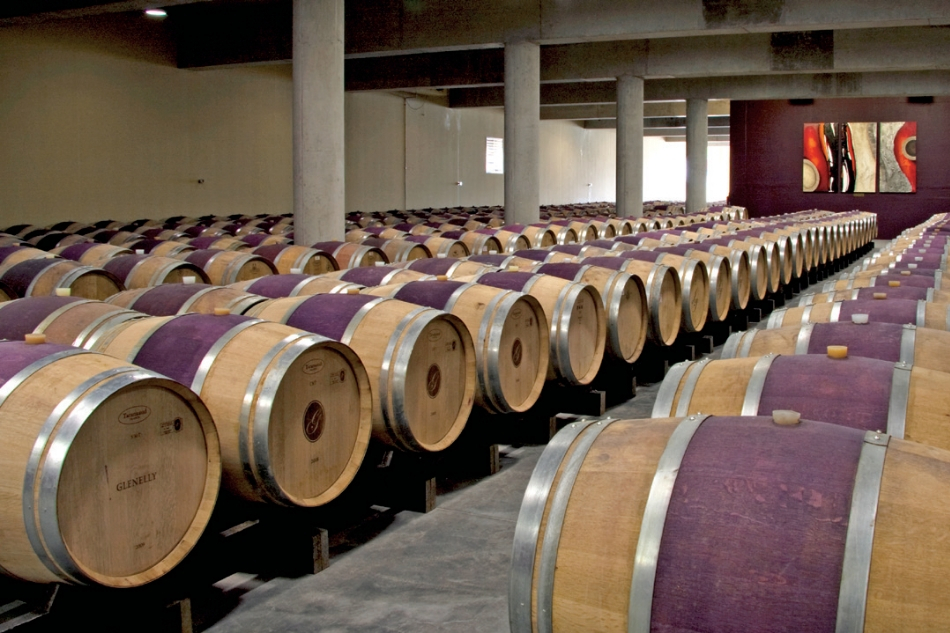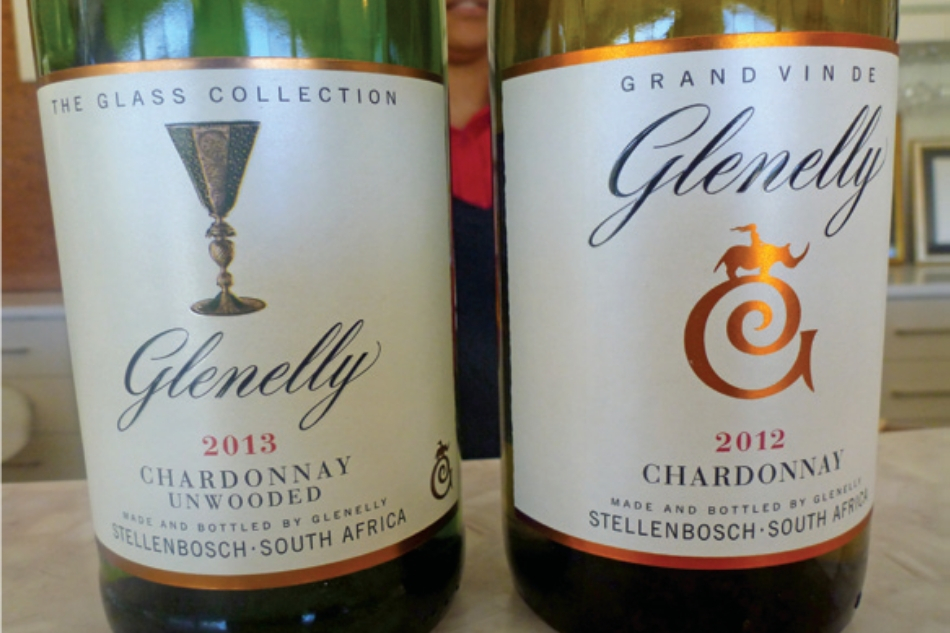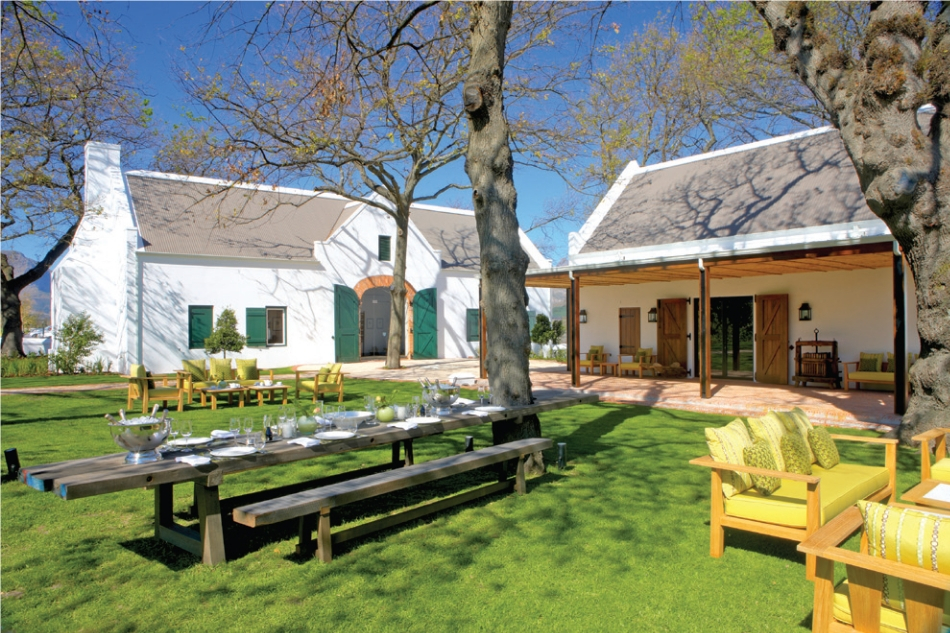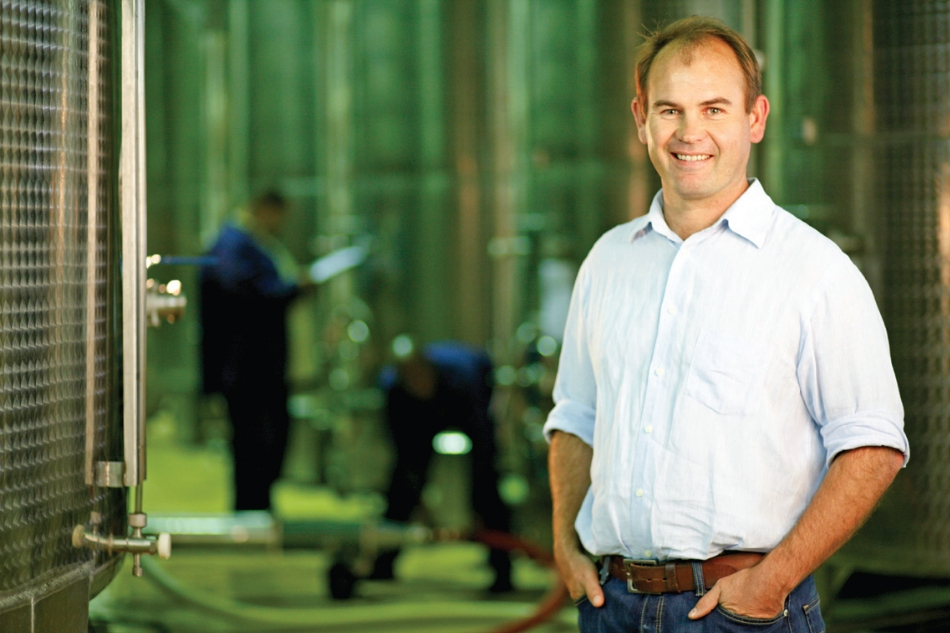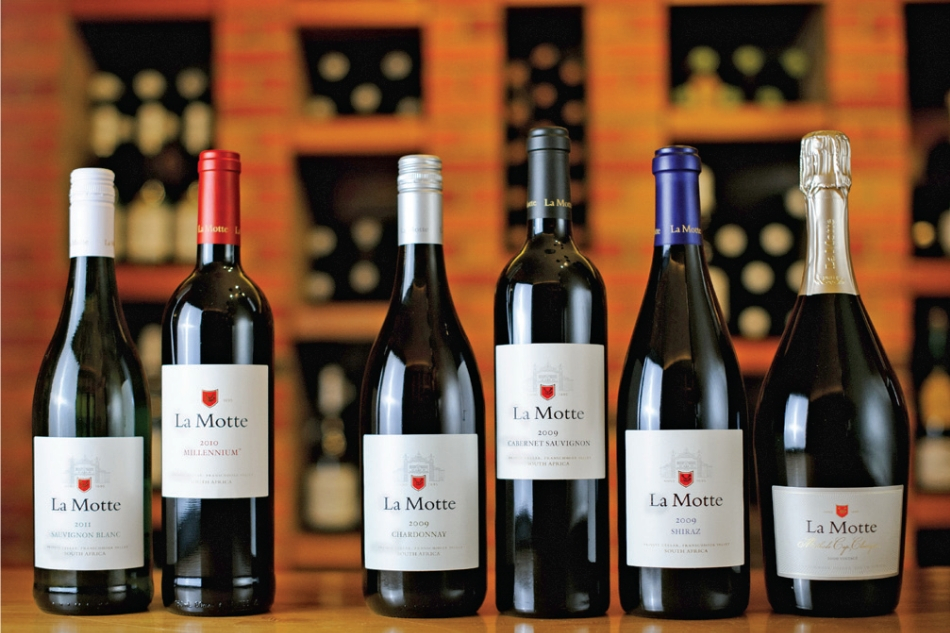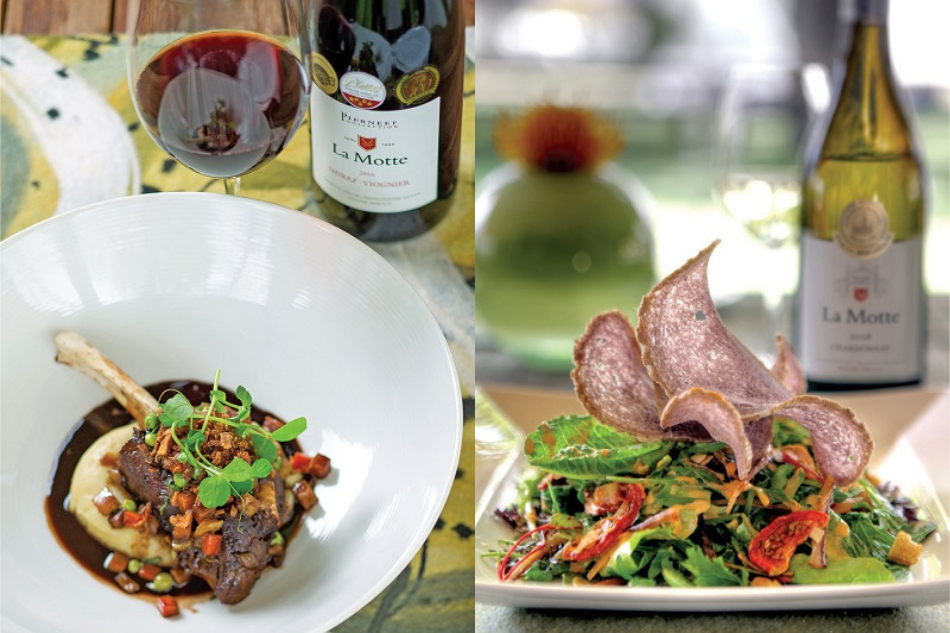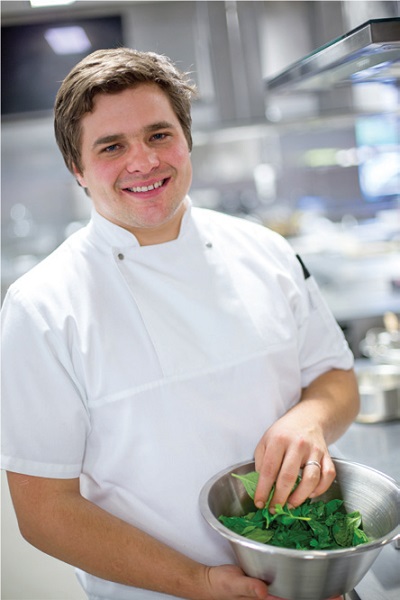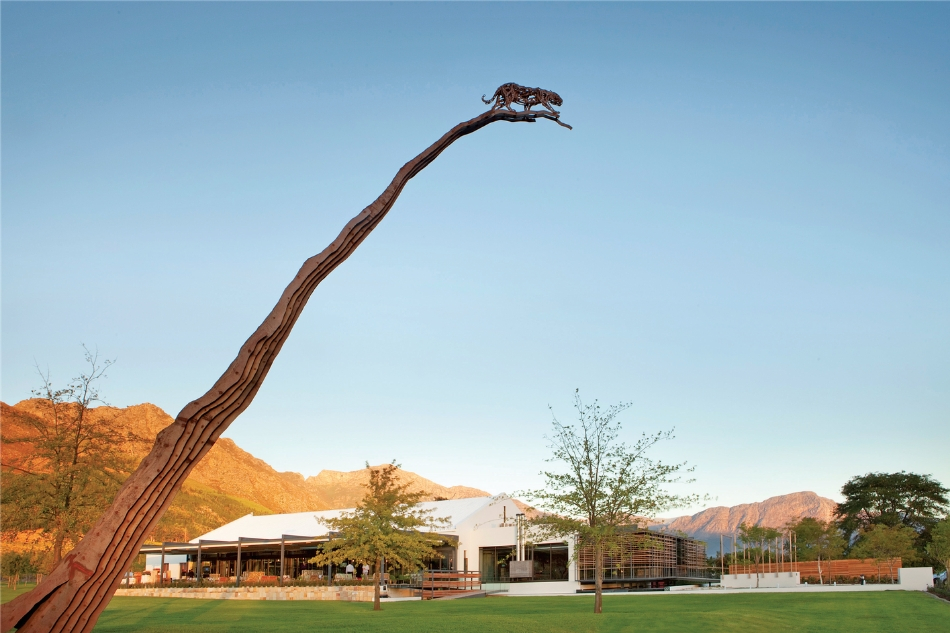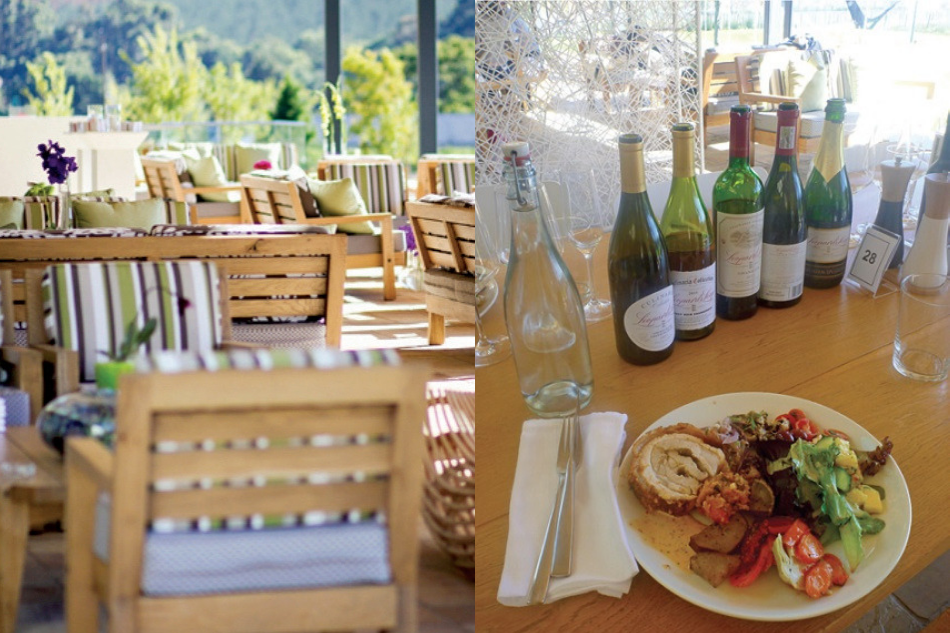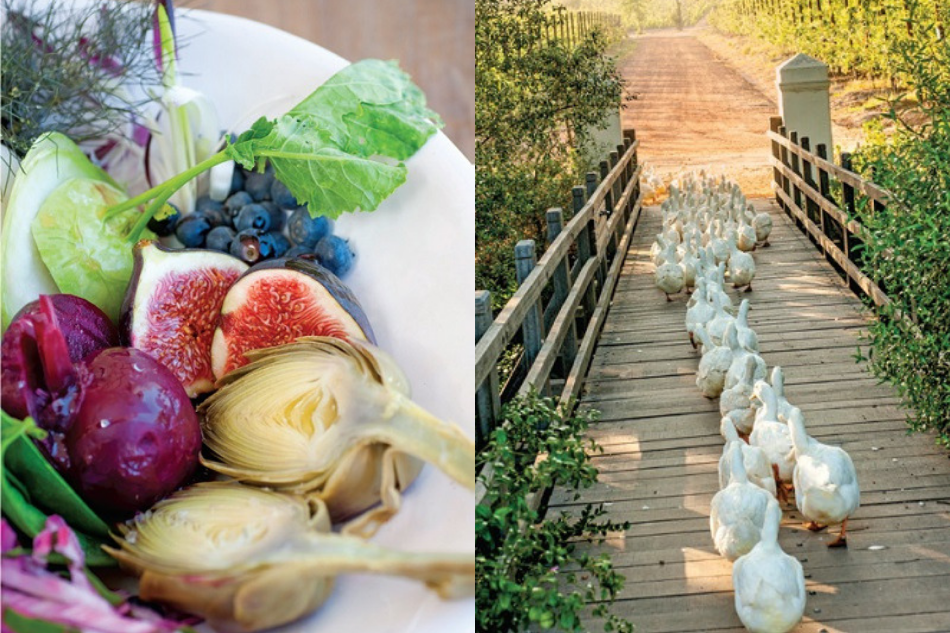A voyage to the Cape Winelands | ABS-CBN
ADVERTISEMENT

Welcome, Kapamilya! We use cookies to improve your browsing experience. Continuing to use this site means you agree to our use of cookies. Tell me more!
A voyage to the Cape Winelands
A voyage to the Cape Winelands
Nana Ozaeta
Published Jun 05, 2019 01:00 PM PHT
|
Updated Jun 06, 2019 01:03 PM PHT
It was my first trip to South Africa and I wasn't sure what to expect—safari trips, the past struggle against apartheid, and even the Ebola scare (clearly unfounded since zero cases have reached this nation). But when it came to the food and wine, I had much to discover, and after spending two days in South Africa's Cape Winelands region, much to be amazed by.
It was my first trip to South Africa and I wasn't sure what to expect—safari trips, the past struggle against apartheid, and even the Ebola scare (clearly unfounded since zero cases have reached this nation). But when it came to the food and wine, I had much to discover, and after spending two days in South Africa's Cape Winelands region, much to be amazed by.
From Cape Town, South Africa's cosmopolitan metropolis in the Western Cape province, it is a pleasant hour-and-a-half drive to the winelands where I got to visit some of the most beautiful and well-respected wineries in the area, as well as sample the cuisine, all in the hope of understanding how nature and its people create a food and wine identity so intertwined with the land.
From Cape Town, South Africa's cosmopolitan metropolis in the Western Cape province, it is a pleasant hour-and-a-half drive to the winelands where I got to visit some of the most beautiful and well-respected wineries in the area, as well as sample the cuisine, all in the hope of understanding how nature and its people create a food and wine identity so intertwined with the land.
You may also like:
You may also like:
Stunning Landscapes
Stunning Landscapes
Having visited other wine regions like Napa Valley and Bordeaux, I have to admit that the Cape Winelands' landscape is arguably the most spectacular. With its rolling hills and vales, set against a backdrop of craggy sandstone peaks and clear blue skies, the vistas are a photographer's dream. The region boasts farmland, but also wild terrain with wild birds, springboks and even the rare Cape leopard. Ever present are the iconic Cape Dutch houses, with their whitewashed walls, ornate gables and thatched roofs, an architecture style brought by early Dutch settlers in the 17th century.
Having visited other wine regions like Napa Valley and Bordeaux, I have to admit that the Cape Winelands' landscape is arguably the most spectacular. With its rolling hills and vales, set against a backdrop of craggy sandstone peaks and clear blue skies, the vistas are a photographer's dream. The region boasts farmland, but also wild terrain with wild birds, springboks and even the rare Cape leopard. Ever present are the iconic Cape Dutch houses, with their whitewashed walls, ornate gables and thatched roofs, an architecture style brought by early Dutch settlers in the 17th century.
ADVERTISEMENT
One of the most spectacular wineries in the area has to be Delaire-Graff Estate, which combines some of the most scenic views in the region, as well as vineyards, a winery, two restaurants, an exclusive lodge, spa and luxury boutiques. It commands a majestic view of vineyards in Stellenbosch, as well as offers a look into the extensive private art collection of its owner, diamond magnate Laurence Graff.
One of the most spectacular wineries in the area has to be Delaire-Graff Estate, which combines some of the most scenic views in the region, as well as vineyards, a winery, two restaurants, an exclusive lodge, spa and luxury boutiques. It commands a majestic view of vineyards in Stellenbosch, as well as offers a look into the extensive private art collection of its owner, diamond magnate Laurence Graff.
Distinctive Wines
Distinctive Wines
While the views are stunning, I've really come for the wines and the food. While South African wines are classified as "New World" (as opposed to the Old World wines of Europe), in truth, the country has been producing wines since the 17th century, first in the Cape Town suburb of Constantia and then expanding to the rest of the Western Cape, and even further afield. The area's Mediterranean weather, climate and soil are perfect for growing grapes, making it the largest wine producing region in South Africa.
While the views are stunning, I've really come for the wines and the food. While South African wines are classified as "New World" (as opposed to the Old World wines of Europe), in truth, the country has been producing wines since the 17th century, first in the Cape Town suburb of Constantia and then expanding to the rest of the Western Cape, and even further afield. The area's Mediterranean weather, climate and soil are perfect for growing grapes, making it the largest wine producing region in South Africa.
It is only in the last two decades, after the fall of apartheid that the local wine industry has boomed, with wineries growing from less than a hundred in the 1980s to several hundred today. The country exports its wines all over the world, and has become famous for its distinctive Chenin Blancs, Pinotage reds and Méthode Cap Classique sparkling wines—yet there is still much more to discover.
It is only in the last two decades, after the fall of apartheid that the local wine industry has boomed, with wineries growing from less than a hundred in the 1980s to several hundred today. The country exports its wines all over the world, and has become famous for its distinctive Chenin Blancs, Pinotage reds and Méthode Cap Classique sparkling wines—yet there is still much more to discover.
Glenelly Estate
Glenelly Estate
Our first stop was a lovely boutique winery called Glenelly Estate in Stellenbosch. While still young, having come out with its first vintage only in 2005, it boasts a pedigreed background in the guise of its current owner, the formidable May de Lencquesaing, former owner of world famous Château Pichon Longueville Comtesse de Lalande in Bordeaux. (She also happens to have a Philippine connection thanks to family holdings here.) Mme. de Lencquesaing purchased this former fruit farm in 2003 and proceeded to transform it into a vineyard with a state-of-the-art winery. Since its first vintage, Glenelly has been making waves thanks to its elegant Syrah, Cabernet Sauvignon, Petit Verdot and Merlots, and its complex Chardonnay. These Bordeaux-style wines are distinctive and, like any good Bordeaux, are meant to age very well.
Our first stop was a lovely boutique winery called Glenelly Estate in Stellenbosch. While still young, having come out with its first vintage only in 2005, it boasts a pedigreed background in the guise of its current owner, the formidable May de Lencquesaing, former owner of world famous Château Pichon Longueville Comtesse de Lalande in Bordeaux. (She also happens to have a Philippine connection thanks to family holdings here.) Mme. de Lencquesaing purchased this former fruit farm in 2003 and proceeded to transform it into a vineyard with a state-of-the-art winery. Since its first vintage, Glenelly has been making waves thanks to its elegant Syrah, Cabernet Sauvignon, Petit Verdot and Merlots, and its complex Chardonnay. These Bordeaux-style wines are distinctive and, like any good Bordeaux, are meant to age very well.
La Motte Estate
La Motte Estate
From Stellenbosch, we drove to the nearby valley of Franschhoek, settled by the French Huguenots in the late 1600s. The area has attracted much attention from the jetsetting crowd thanks to its quaint village, wineries, B&Bs and world-class restaurants. One such winery that is much visited is La Motte Estate whose history goes back to the mid 1700s, now owned by the prominent Rupert family.
From Stellenbosch, we drove to the nearby valley of Franschhoek, settled by the French Huguenots in the late 1600s. The area has attracted much attention from the jetsetting crowd thanks to its quaint village, wineries, B&Bs and world-class restaurants. One such winery that is much visited is La Motte Estate whose history goes back to the mid 1700s, now owned by the prominent Rupert family.
ADVERTISEMENT
The property is beautiful, boasting vineyards, hiking trails, heritage buildings, a restaurant, museum and farm shop. At its cozy, elegant Tasting Room, I met its award-winning cellarmaster Edmund Terblanche who walked me through the impressive range of La Motte wines, from the classic 2014 Sauvignon Blanc to its “ambassador” label, the versatile 2012 Millennium blend of Merlot, Cabernet Franc, Malbec and Petit Verdot. One of its biggest success stories is the 2011 Chardonnay, light yet with a hint of smokiness, aged 12 months in steel then in French oak. (The 2007 vintage came in 4th place out of 951 Chardonnays in France.) La Motte’s premium range includes a Sauvignon Blanc produced with organically grown grapes and a grand, earthy Shiraz Viogner.
The property is beautiful, boasting vineyards, hiking trails, heritage buildings, a restaurant, museum and farm shop. At its cozy, elegant Tasting Room, I met its award-winning cellarmaster Edmund Terblanche who walked me through the impressive range of La Motte wines, from the classic 2014 Sauvignon Blanc to its “ambassador” label, the versatile 2012 Millennium blend of Merlot, Cabernet Franc, Malbec and Petit Verdot. One of its biggest success stories is the 2011 Chardonnay, light yet with a hint of smokiness, aged 12 months in steel then in French oak. (The 2007 vintage came in 4th place out of 951 Chardonnays in France.) La Motte’s premium range includes a Sauvignon Blanc produced with organically grown grapes and a grand, earthy Shiraz Viogner.
Leopard’s Leap Family Vineyards
Leopard’s Leap Family Vineyards
La Motte’s sister winery next door, Leopard’s Leap offers a more down-to-earth approach to its wines which are affordably priced, easy to pair with food, yet produced according to the same quality standards of the best of South African wines. I met with veteran winemaker Eugene van Zyl who was happy to show us his latest pride and joy, the Culinaria Collection conceptualized primarily as food companions. Developed together with Leopard Leap’s resident chef Pieter de Jager, these are elegant wines, low in alcohol, not overpowering, that manage to shine even brighter when enjoyed with food. Standouts include a subtle and slightly oaky Chenin Grenache, a Pinot Noir Chardonnay that plays between a red and a white, and a more complex Shiraz Grenache.
La Motte’s sister winery next door, Leopard’s Leap offers a more down-to-earth approach to its wines which are affordably priced, easy to pair with food, yet produced according to the same quality standards of the best of South African wines. I met with veteran winemaker Eugene van Zyl who was happy to show us his latest pride and joy, the Culinaria Collection conceptualized primarily as food companions. Developed together with Leopard Leap’s resident chef Pieter de Jager, these are elegant wines, low in alcohol, not overpowering, that manage to shine even brighter when enjoyed with food. Standouts include a subtle and slightly oaky Chenin Grenache, a Pinot Noir Chardonnay that plays between a red and a white, and a more complex Shiraz Grenache.
These wineries are only a small sampling of what the region has to offer. While its winegrowing roots are several centuries old, the industry is still young, with both traditional and modern methods being used to create wines of distinction. La Motte’s Edmund Terblanche shares that South Africa is already a leader in sustainability in the wine industry, with its support of the Biodiversity and Wine Initiative (BWI), a handbook on sustainable farming, as well as its Wine and Spirit Board seal that certifies wines that have been sustainably produced.
These wineries are only a small sampling of what the region has to offer. While its winegrowing roots are several centuries old, the industry is still young, with both traditional and modern methods being used to create wines of distinction. La Motte’s Edmund Terblanche shares that South Africa is already a leader in sustainability in the wine industry, with its support of the Biodiversity and Wine Initiative (BWI), a handbook on sustainable farming, as well as its Wine and Spirit Board seal that certifies wines that have been sustainably produced.
A Cuisine of One’s Own
A Cuisine of One’s Own
During my visit, it became very apparent that one comes here, not just for the wine but for the glorious food as well. But what exactly is the cuisine of South Africa? The answer may lie at La Motte Estate’s acclaimed restaurant, Pierneef à La Motte. Here, heritage recipes of the Cape Winelands are cooked and served in a modern manner. It’s a cuisine that has evolved from the early Dutch traders who brought herbs and spices from all around the world, as well as influenced by the French Huguenots who brought their French recipes and techniques.
During my visit, it became very apparent that one comes here, not just for the wine but for the glorious food as well. But what exactly is the cuisine of South Africa? The answer may lie at La Motte Estate’s acclaimed restaurant, Pierneef à La Motte. Here, heritage recipes of the Cape Winelands are cooked and served in a modern manner. It’s a cuisine that has evolved from the early Dutch traders who brought herbs and spices from all around the world, as well as influenced by the French Huguenots who brought their French recipes and techniques.
While the dishes are European in origin, they are bolder, more spice-laden and with a definite sweet-savory profile. Pierneef’s Chef Michelle Theron celebrates these flavors with such old-school dishes as Cape Bokkom Salad with its cornucopia of fresh greens, vegetables, dried apricots, almonds and bokkom (salted dried fish) tossed in a wild garlic dressing. Chicken is flavored with preserved lemons, pork with curry and fruit chutney. La Motte published a meticulously researched Cape Winelands Cuisine cookbook in 2011 to showcase these old-style recipes, adapting these dishes for the 21st century in the kitchens of Pierneef.
While the dishes are European in origin, they are bolder, more spice-laden and with a definite sweet-savory profile. Pierneef’s Chef Michelle Theron celebrates these flavors with such old-school dishes as Cape Bokkom Salad with its cornucopia of fresh greens, vegetables, dried apricots, almonds and bokkom (salted dried fish) tossed in a wild garlic dressing. Chicken is flavored with preserved lemons, pork with curry and fruit chutney. La Motte published a meticulously researched Cape Winelands Cuisine cookbook in 2011 to showcase these old-style recipes, adapting these dishes for the 21st century in the kitchens of Pierneef.
ADVERTISEMENT
Farm Food
Farm Food
The more I ate around South Africa, the more I realized that what makes the food scene so vibrant and distinctive is the sheer diversity of local ingredients that chefs can play with. Thanks to the varied topography and climate, a wide variety of fruits and vegetables grows there, from tropical bananas to figs and apples, not to mention beef, lamb, pork, poultry, abundant seafood and game meats, plus indigenous herbs and spices found nowhere else.
The more I ate around South Africa, the more I realized that what makes the food scene so vibrant and distinctive is the sheer diversity of local ingredients that chefs can play with. Thanks to the varied topography and climate, a wide variety of fruits and vegetables grows there, from tropical bananas to figs and apples, not to mention beef, lamb, pork, poultry, abundant seafood and game meats, plus indigenous herbs and spices found nowhere else.
At Leopard’s Leap, the restaurant revels in this local bounty through its Rotisserie Lunch, served five times a week in a relaxed, family oriented setting. Young and energetic chef Pieter de Jager calls it a “harvest’s table” that celebrates seasonality with its buffet offering of seasonal salads and vegetables sourced from the winery’s organic farm. Your choice of grilled beef, lamb, rotisserie chicken and an irresistible pork belly with crispy crackling completes the meal. With plates loaded, Leopard’s Leap wines chilling on ice, we sat at the picnic-style tables, surrounded by guests happily chatting away with their kids running around the space, and with none of the snobbery or “stuffiness” usually associated with wineries. Leopard’s Leap offers food and wine pairings as well as cooking classes in its large open kitchen, one more reason to make this a must-visit destination.
At Leopard’s Leap, the restaurant revels in this local bounty through its Rotisserie Lunch, served five times a week in a relaxed, family oriented setting. Young and energetic chef Pieter de Jager calls it a “harvest’s table” that celebrates seasonality with its buffet offering of seasonal salads and vegetables sourced from the winery’s organic farm. Your choice of grilled beef, lamb, rotisserie chicken and an irresistible pork belly with crispy crackling completes the meal. With plates loaded, Leopard’s Leap wines chilling on ice, we sat at the picnic-style tables, surrounded by guests happily chatting away with their kids running around the space, and with none of the snobbery or “stuffiness” usually associated with wineries. Leopard’s Leap offers food and wine pairings as well as cooking classes in its large open kitchen, one more reason to make this a must-visit destination.
Another must-visit for farm-fresh cuisine is the gorgeous Babylonstoren, a working farm, gardens, vineyard, winery, restaurant, boutique hotel, spa and farm store all rolled into one. With its reference to ancient Babylon (the hill that sits on its property), the place feels like a veritable garden of Eden. The day started with a lovely breakfast at its sunlit Babel restaurant with free-range eggs, homemade muesli and bacon, fresh-squeezed fruit and vegetable juices on the menu. General Manager Terry de Waal showed me around the lovely gardens with its neat rows of olive and citrus trees, vegetable patches, tropical fruits and even a prickly pear maze. Dotted with traditional Cape Dutch farmhouses, Babylonstoren is a magical place, a new kind of country getaway that brings visitors closer to the area’s farming heritage. When I asked Edmund Terblanche about his approach to winemaking, he simply said, “You make what the terroir gives you.” Indeed, the farmers, winemakers, food producers and chefs I met during my two days in the Cape Winelands have shown how the landscape, soil and climate, coupled with its history, have inspired them to create a food and wine identity that embraces both tradition and modernity.
Another must-visit for farm-fresh cuisine is the gorgeous Babylonstoren, a working farm, gardens, vineyard, winery, restaurant, boutique hotel, spa and farm store all rolled into one. With its reference to ancient Babylon (the hill that sits on its property), the place feels like a veritable garden of Eden. The day started with a lovely breakfast at its sunlit Babel restaurant with free-range eggs, homemade muesli and bacon, fresh-squeezed fruit and vegetable juices on the menu. General Manager Terry de Waal showed me around the lovely gardens with its neat rows of olive and citrus trees, vegetable patches, tropical fruits and even a prickly pear maze. Dotted with traditional Cape Dutch farmhouses, Babylonstoren is a magical place, a new kind of country getaway that brings visitors closer to the area’s farming heritage. When I asked Edmund Terblanche about his approach to winemaking, he simply said, “You make what the terroir gives you.” Indeed, the farmers, winemakers, food producers and chefs I met during my two days in the Cape Winelands have shown how the landscape, soil and climate, coupled with its history, have inspired them to create a food and wine identity that embraces both tradition and modernity.
BABYLONSTOREN, www. babylonstoren.com
DELAIRE GRAFF ESTATE, Helshoogte Pass, Stellenbosch, www.delaire.co.za
GLENELLY ESTATE, Stellenbosch, www.glenellyestate.com
LA MOTTE WINE ESTATE, Franschhoek, www.la-motte.com
LEOPARD’S LEAP FAMILY VINEYARDS, Franschhoek, www.leopards-leap.com
Leopard’s Leap and La Motte wines are exclusively available at Wine Depot branches in SM Aura, Yakal Street Makati, Reposo Street, Connecticut Greenills and Alabang. Visit www.winedepot.com.ph
This story originally appeared on Food Magazine December 2014 - Januaray 2015
ADVERTISEMENT
ADVERTISEMENT



